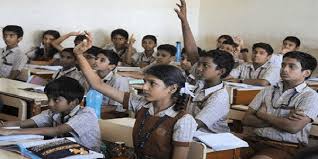Outlines
- Introduction
- Definition of education
- Goals of education
- Critical analysis of education
- Private vs Government institutes
- Lack of uniformity
- Outdated curriculum
- Lack of professional/quality/trained teachers
- Examination system
- Internal influences
- External influences
- Lack of resources
- A large number of dropouts
- Implementation of policies
- Fewer budgets
- Corruption
- Conclusion
Introduction
Education plays an important role in the advancement of a nation.
As stated
“When you have got that knowledge by means of education and when you have made yourselves strong economically and industrially, then you have got to prepared yourselves for defense, defense against external aggression and to maintain internal security”
Quaid-e-Azam
(presidential address at the conference of Punjab Muslim federation, 2nd March 1947)
Definition of education
“Education is the process of acquiring knowledge, developing skills, training, learning of moral values, beliefs or habits, etc. Education is important for every age. It is irrespective of caste, creed, or gender. It is necessary for a stable life, self-independence, self-confidence, etc. it brings reforms on the political, social, and economic levels.”
Goals of education
The education system was first decided to form in the national educational conference held in Karachi in 1947. The decision of this conference was that the education system would work according to the national aspirations of Pakistan. The leader of the nation Quaid-e-Azam Muhamad Ali Jinnah said that the main goal of the education system is to develop the national character of the Pakistani generation. The national character, here, meant a high sense of responsibility, social integrity, and selfless service to the nation and to the country.
At that time many educational committees were formed. But the rules and policy implementation criteria were very poor. Pakistan instead of progressing suffered a lot. Parental participation is very crucial for ensuring quality aspects. Home is the first school of the child. So without parental involvement, there will be less effective implementation of policies that will remain a far cry. In Pakistan, nowadays the education system suffers a lack of budget, lack of implementation of policies, poor physical facilities, political interference, old and outdated curriculum, lack of research, lack of facilities like science labs and computer labs, dropout at a high level.
All these problems can be solved by providing adequate budget and proper policy implementation. Education is directly responsible for people’s development and growth in every sector.
Critical analysis
PVT vs Govt. Sector
The education system is divided into two sectors. PVT and Govt. sector which promotes discrimination among people. The private sector is usually attracted by the elite class who can afford to send their children to expensive schools and don’t compromise on the quality of education. On the other hand, government schools are of low quality due to lack of accountability, inadequate budget, lack of qualified and trained staff is also the main reason for the poor education system. This is the reason people always look for a good education for their children.
Lack of uniformity/poor
The most important problem is also the lack of a single uniform education system. Different education systems are working in society, e.g: Madrassas, private schools, or govt. Schools. These are not working on uniform principles. These institutes have their own curriculum. And also a different environment. So, due to these reasons, the pace of polarization is accelerated in society. And due to this polarization, there is a huge social division in the social, political, or economic ground. The purpose of education is to bring national unity but this polarized system brought differences and gaps among the nation. And the circumstances further leading the division on the linguistic and regional ground which is gradually demolishing cohesion.
Outdated curriculum
The curriculum is a vital component through which goals of education can be achieved. But the curriculum of the education system in Pakistan does not meet the demands of present times. It is an outdated curriculum which only compels the learners to memorization of certain facts and figures. No further improvements are made according to the time and modern world. So this curriculum is unable to achieve the basic need for education. A curriculum should be based on research work, psychological, philosophical, and sociological foundations of education. Without practical work, research work, and adequate scientific knowledge, we cannot compete with the rest of the world. This curriculum only emphasizes memory or theory.
Lack of Professional/Quality/Trained teachers
Teacher’s important role in the education system. Without teachers, an education system cannot work. Professional/trained teachers are essential for quality performances. There are very small opportunities for training. Although there were different teacher training institutes formed now either these institutes are not well-resourced or being poor due to lack of pf funds/administrators. Thus, the consequences of their skills are not well-reformed and unskilled. According to research, teachers do not use new methods or strategies of teaching.
Teachers encourage students to cram for the subjects. They don’t teach students how to work in science labs or how to use the equipment. They do not encourage the use of the libraries, and also do not develop reading habits in students. Teachers just ze the students rely on cramming to pass the examination. Teachers are responsible for all this mess.
Dropouts at a high level
Due to the lack of effective management of the educational institutions, there is a lack of discipline which eventually results in alarming dropouts. The reasons for dropouts from the education system in Pakistan are maybe, the punishments in schools, poor motivating environment, poor infrastructure of schools, and also weak parenting plays a huge role in school dropouts. This trend adds more to illiteracy rates as well.
System of examination
The examination is the process of evaluation of a student’s learnings. An examination should evaluate the students from all aspects of learning but unfortunately, the education system of Pakistan only evaluates on the basis of memorization. There is another factor for a poor examination system which is internal/external force. These forces encourage the trend of illegal or unfair means of exams.
Lack of Resources
There are no sufficient resources in educational institutes of Pakistan. Educational resources like laboratories, libraries, books, etc. Are not available in appropriate amounts. Other than the resources like books, there is also a lack of educational institutes according to the students, ill-equipped labs, and inadequate teachers also responsible for the poor education system.
Policy implementations
Policy implementation is also another reason for the poor education system. After the independence of Pakistan, different policies were formed to be implemented but could not be implemented in true sense. The different causes of poor policy implementation, lack of funds, lack of resources, corruption, political interference, etc.
Low budgets
The main reason for every department to flourish is the proper sufficient financial resources. The successive government of Pakistan, allocating less than 2.5% of the total budget of Pakistan which is insufficient for the education system to fulfill the needs of.
In many developing countries, the budget for the education system has increased but in Pakistan, it is decreasing day by day. According to the research of the International crisis group, Pakistan is amongst those 12 countries that spent less than 2% of their GPT on the education sector. With the insufficient financial condition, it is impossible for the education system to achieve the goals of education in level.
Corruption
Corruption is ruining the education system of Pakistan. There is a weak level of accountability and check/balance in the education system, which encourages many illegal practices in students, teachers, or in examination systems e.g use of authority illegally, unnecessary favors promotions, and decision making. The examination system also experiences illegal external/internal favors for students and also the members of the education system.
Conclusion
The education system develops nations. It is important in all domains of life such as social, spiritual, political, or economic. The reason for the development of countries is having an established education system. But in Pakistan, the education system is not playing a vital role in nation-building due to various factors.




